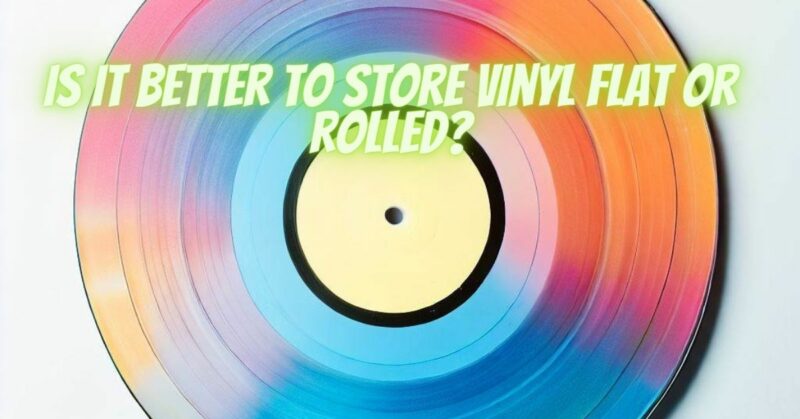Vinyl records are cherished for their rich, analog sound and tactile appeal. Proper storage is essential to maintain the quality of your vinyl collection over time. One common question that arises among vinyl enthusiasts is whether it’s better to store vinyl records flat or rolled. In this article, we’ll explore the advantages and disadvantages of both storage methods to help you make an informed decision on how to protect your precious vinyl.
Storing Vinyl Records Flat
Storing vinyl records flat, horizontally stacked on top of each other, is the traditional and widely recommended method. Here are some reasons why:
- Minimizes Warping: Storing records flat helps prevent warping, one of the most common issues with vinyl records. Warping occurs when records are exposed to uneven pressure or heat, causing them to curve and affect playback quality.
- Maintains Shape: Laying records flat ensures they maintain their shape and remain perfectly flat, preserving their ability to track accurately on a turntable.
- Easy Access: Stacking records horizontally allows for easy access and browsing of your collection, as you can flip through the records like a book.
- Space-Efficient: Flat storage is space-efficient, making it suitable for vinyl collectors with limited storage space.
To store vinyl records flat, use sturdy shelves or dedicated record storage units designed to support the weight of vinyl. Ensure that the storage surface is level and free from moisture.
Storing Vinyl Records Rolled
Some vinyl collectors prefer storing records rolled, especially when dealing with limited storage space or when using certain storage solutions like crates or boxes. Here are the considerations for storing vinyl records rolled:
- Space-Saving: Rolled storage is useful when you have limited shelf or storage space, as it requires less horizontal space.
- Quick Access: Rolling records can make it easier to access specific records in a crate or box, as you can quickly flip through them.
However, rolled storage comes with potential drawbacks:
- Risk of Warping: Records stored rolled are more susceptible to warping, as uneven pressure can cause the records to bend over time. This can negatively impact playback quality.
- Limited Protection: Rolled storage offers less protection against dust, moisture, and physical damage compared to flat storage.
- Inconvenience: Retrieving a specific record from a rolled storage arrangement can be more cumbersome, especially if you have a large collection.
Best Practices for Vinyl Storage
Whether you choose to store vinyl records flat or rolled, here are some best practices to ensure the longevity of your collection:
- Use Inner Sleeves: Always keep records in high-quality inner sleeves to protect them from dust and scratches.
- Store Vertically: If space permits, store your records vertically, as this reduces the risk of warping and makes it easier to browse your collection.
- Maintain Stable Temperature and Humidity: Keep your vinyl collection in an environment with stable temperature and humidity levels to prevent damage.
- Regular Cleaning: Clean your records regularly using a carbon fiber brush or a dedicated record cleaning machine to remove dust and debris.
- Invest in Outer Sleeves: Consider using outer sleeves to protect album covers from wear and tear.
The choice between storing vinyl records flat or rolled ultimately depends on your specific circumstances and preferences. While flat storage is generally recommended for maintaining record integrity and playback quality, rolled storage can be a space-saving solution when necessary. Regardless of your chosen storage method, the key is to prioritize protection against warping, dust, and moisture to ensure your vinyl collection remains in excellent condition for years to come.


